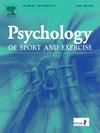残疾人的身体活动与生活质量/主观幸福感。
IF 3.3
2区 心理学
Q2 HOSPITALITY, LEISURE, SPORT & TOURISM
引用次数: 0
摘要
将资源投入体育活动(PA)干预和倡议的案例通常取决于证明PA对人们生活质量(QOL)/主观幸福感(SWB)的影响。在涉及残疾儿童、青少年和成人的pa干预研究中,效果往往不一致,而且相对较小。在本文中,我认为,由于对生活质量/生活质量的错误概念和错误测量,以及缺乏对生活质量/生活质量如何影响的理论规范,残疾人生活质量/生活质量的真实影响被掩盖了。我首先概述了生活质量和生活质量的概念,然后回顾了PA对残疾人生活质量和生活质量影响的定量和定性研究。来自运动和运动心理学的研究旨在解释PA如何改善生活质量/主观幸福感,并将其与来自心理学母学科的生活质量理论相结合。在最后一部分,我将这些观点整合到体育活动和生活质量/主观幸福感的质量参与模型中,并为研究人员和干预主义者提供建议。PA可以为残疾人士的生活带来实质性的改变;然而,研究人员和干预人员在设计和评估PA干预措施以改善生活质量/幸福感时必须更加谨慎。本文章由计算机程序翻译,如有差异,请以英文原文为准。
Physical activity and quality of life/subjective well-being in people with disabilities: A look backwards and a way forwards
The case for devoting resources to physical activity (PA) interventions and initiatives often hinges on demonstrating the impact of PA on people's quality of life (QOL)/subjective well-being (SWB). In PA-intervention studies involving children, youth and adults with disabilities, the effects tend to be inconsistent and relatively small. In this paper, I argue that the true effects of PA on QOL/SWB in people with disabilities have been masked by mis-conceptualization and mis-measurement of QOL/SWB, and a lack of theoretical specification of how PA may influence QOL/SWB. I begin with an overview of the QOL and SWB concepts followed by a review of quantitative and qualitative research on the effects of PA on QOL/SWB among people living with disabilities. Research from sport and exercise psychology that aims to explain how PA improves QOL/SWB is synthesized along with QOL theorizing from the parent discipline of psychology. In the final section, I integrate these perspectives into a Quality Participation Model of Physical Activity and Quality of Life/Subjective Well-Being with recommendations for researchers and interventionists. PA can make a substantive difference in the lives of people with disabilities; however, researchers and interventionists must be more careful when designing and assessing PA interventions to improve QOL/SWB.
求助全文
通过发布文献求助,成功后即可免费获取论文全文。
去求助
来源期刊
CiteScore
6.40
自引率
5.90%
发文量
172
审稿时长
69 days
期刊介绍:
Psychology of Sport and Exercise is an international forum for scholarly reports in the psychology of sport and exercise, broadly defined. The journal is open to the use of diverse methodological approaches. Manuscripts that will be considered for publication will present results from high quality empirical research, systematic reviews, meta-analyses, commentaries concerning already published PSE papers or topics of general interest for PSE readers, protocol papers for trials, and reports of professional practice (which will need to demonstrate academic rigour and go beyond mere description). The CONSORT guidelines consort-statement need to be followed for protocol papers for trials; authors should present a flow diagramme and attach with their cover letter the CONSORT checklist. For meta-analysis, the PRISMA prisma-statement guidelines should be followed; authors should present a flow diagramme and attach with their cover letter the PRISMA checklist. For systematic reviews it is recommended that the PRISMA guidelines are followed, although it is not compulsory. Authors interested in submitting replications of published studies need to contact the Editors-in-Chief before they start their replication. We are not interested in manuscripts that aim to test the psychometric properties of an existing scale from English to another language, unless new validation methods are used which address previously unanswered research questions.

 求助内容:
求助内容: 应助结果提醒方式:
应助结果提醒方式:


